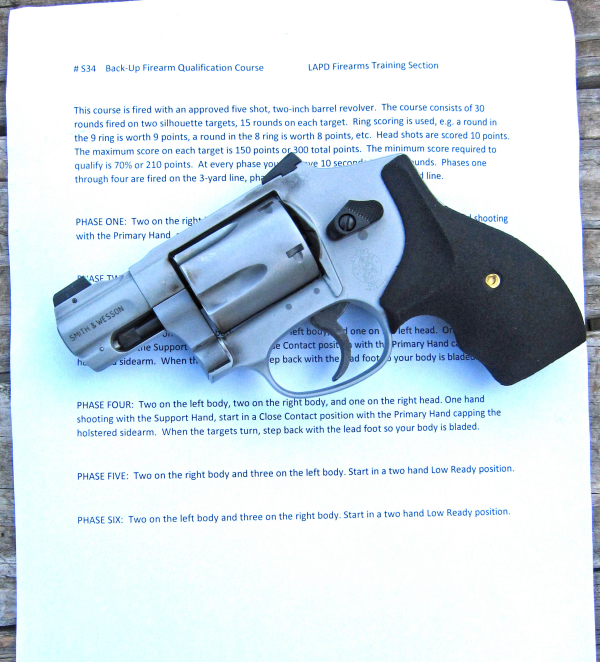
The S&W/Lipseys “Ultimate Carry” revolver line has made a splash as one of the most cost-effective upgrades to the snub defense revolver in Smith & Wesson history. They made a point to hit all the needed upgrades without breaking the bank.
It worked. While there was some interesting variation in point of impact vs. point of aim, reported here, it is altogether a pleasing refresh of the S&W Centennial revolver line.
Does it match up to the published qual course of one of the largest police agencies in the US? There was one way to find out. At the end, we find that it’s the shooter who messes up the procedure that’s the problem. But what about the gun?
The course of fire is the Back-Up Firearm Qualification Course, published as being from the LAPD Firearms Training Section. It’s for the “five-shot revolver,” apparently the gun that was allowed at the time the course was written.
I shot the LAPD Back-Up Firearm Qualification Course with the M642UC – as it’s a 38 and a five-shot gun, as required when the course was designed. Using old stock Remington LeadLess 125 grain FNEB (Flat Nose Encapsulated Base) ammo, I shot the course on BT-5 HDE targets from LE Targets. They are BT-5 silhouettes with a head box, required for Los Angeles Police courses of fire. The maximum scoring “10” ring in the center is 4” wide by 5 7/8” high; the head box is 3 7/8” x 3”.
That’s a reasonably precise scoring area. The whole silhouette fits over an IDPA or USPSA cardboard target with a little room to spare. I had them posted on target stands from Hatpoint Target.
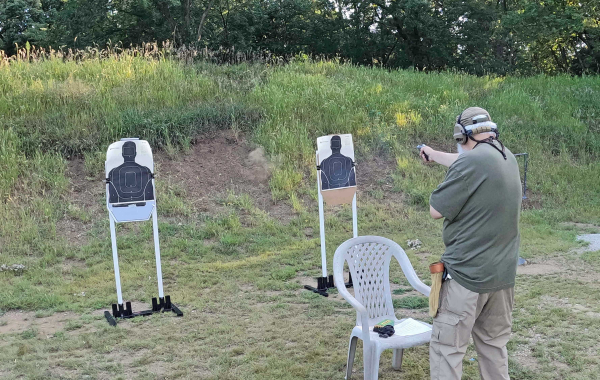
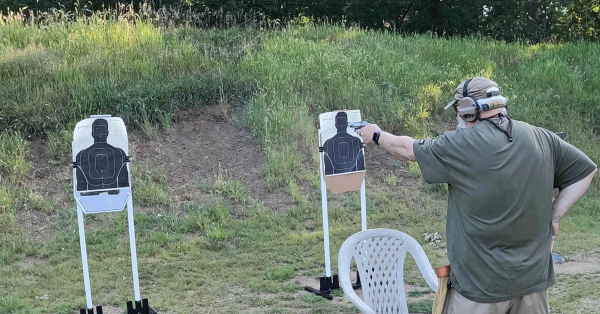
It’s a two-target drill, with a pair fired on one target followed by a pair on the other target, followed by a hit in the head box on the 2nd target. The course is fired at three yards for phases one through four, with two other strings of fire at seven yards. All the close strings of fire are shot with one hand on the gun. Half of the shooting is in “the wrong hand,” as the primary hand is covering the holstered primary gun.
It is, after all, a back-up gun.
The way I failed the course was to shoot Phase Five out of sequence.
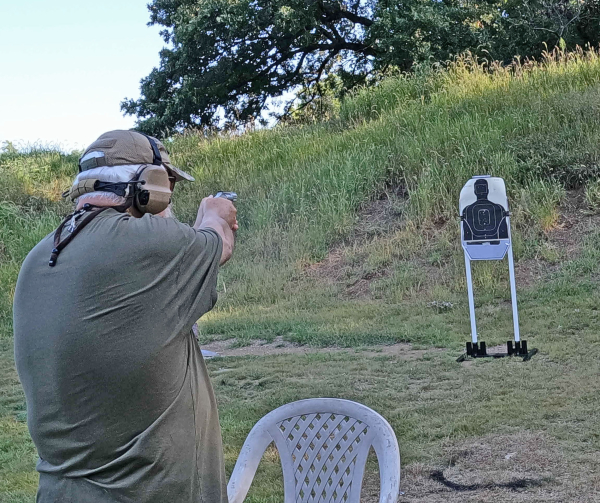
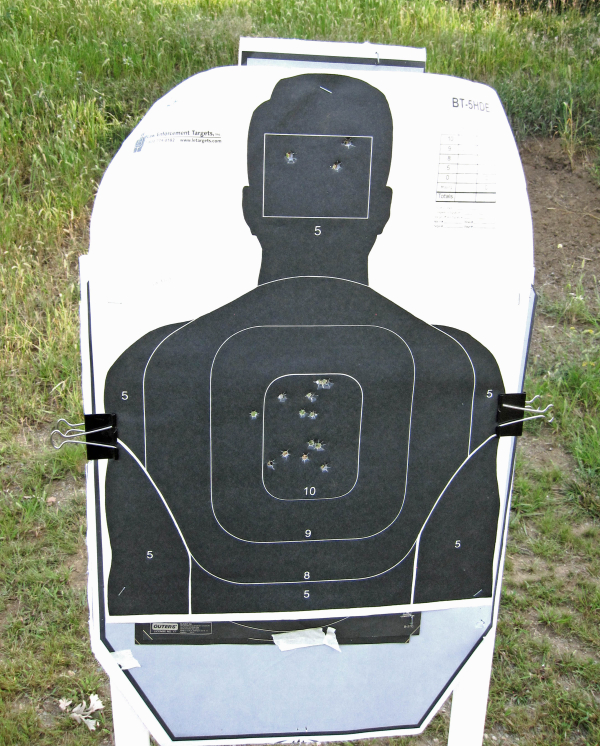
All rounds were fired in time – a generous ten seconds for each string of five rounds.
The numbers on target totaled to 296/300, all head shots were in. The accuracy and handling – the gun wearing the Hamre Forge-Spegel high-horn stocks – was all that was needed.
Why shoot the LAPD course for back-up guns? One, it’s a “documented standard of achievement” on a police course of fire, shot substantially like it is at the agency. Two, the agency isn’t a small department, it’s a major US municipal department; everyone has heard of it.
I’m not in the LAPD, not qualified to work there, I’m not even in that state. I did meet this narrow qualification standard.
That makes it a fair standard against which to measure the capability of a handgun that could be carried by those members of service – and it was the point of the exercise.
Also, it’s not a bad practice course. You fire thirty rounds and precision is order of the day.
So how’s the S&W M642 UC? It works just fine. I’ll be stretching the distance shooting with it and the 432 UC and keep you posted.
— Rich Grassi